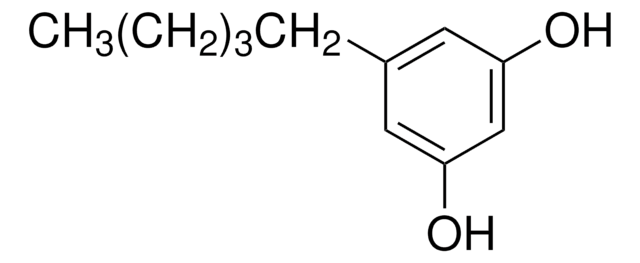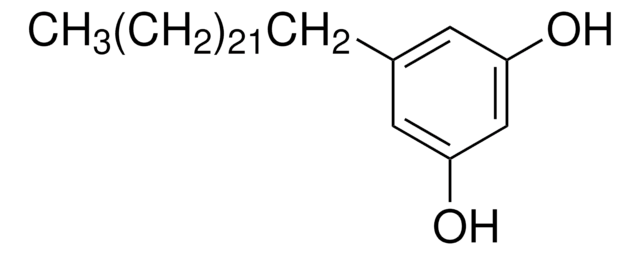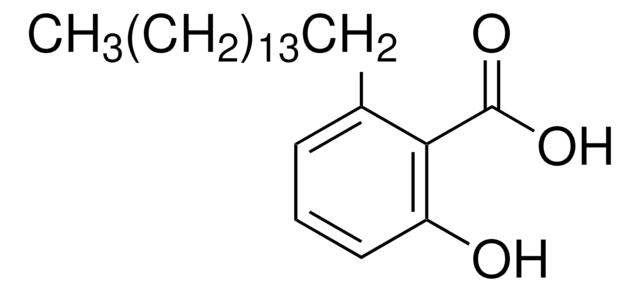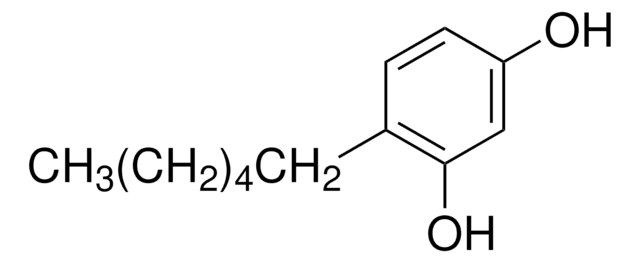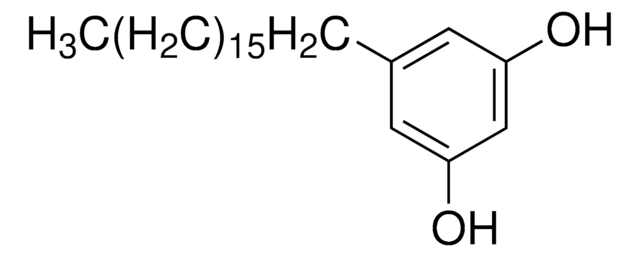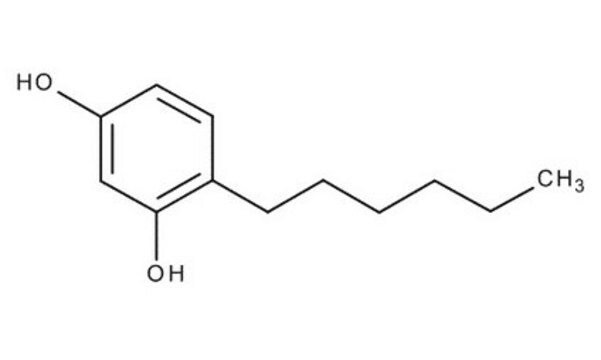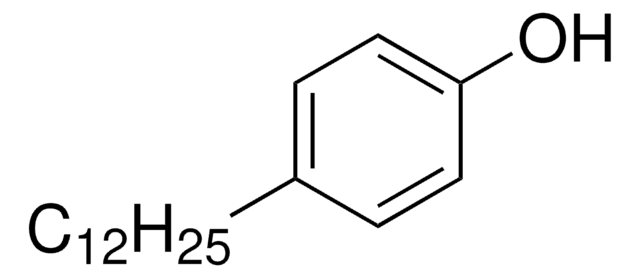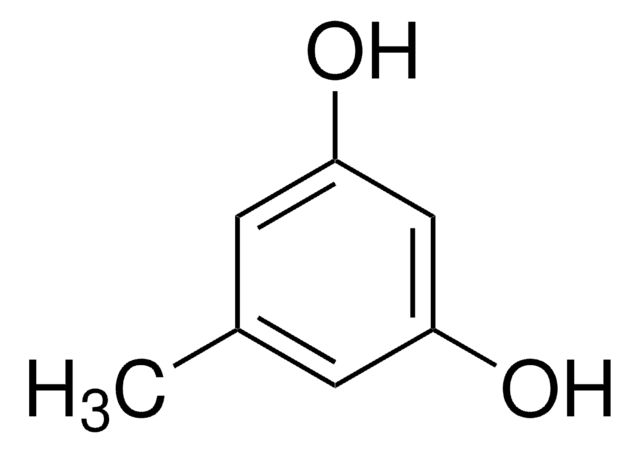91822
5-Pentadecylresorcinol
analytical standard
Synonyme(s) :
1,3-Dihydroxy-5-pentadecylbenzene, 5-Pentadecyl-1,3-benzenediol
About This Item
Produits recommandés
Qualité
analytical standard
Niveau de qualité
Pureté
≥95.0% (HPLC)
Durée de conservation
limited shelf life, expiry date on the label
Technique(s)
HPLC: suitable
gas chromatography (GC): suitable
Application(s)
cleaning products
cosmetics
food and beverages
personal care
Format
neat
Température de stockage
2-8°C
Chaîne SMILES
CCCCCCCCCCCCCCCc1cc(O)cc(O)c1
InChI
1S/C21H36O2/c1-2-3-4-5-6-7-8-9-10-11-12-13-14-15-19-16-20(22)18-21(23)17-19/h16-18,22-23H,2-15H2,1H3
Clé InChI
KVVSCMOUFCNCGX-UHFFFAOYSA-N
Description générale
Application
- Goji berries using ultra-high-pressure liquid chromatography coupled with quadrupole-time-of-flight mass spectrometry (UHPLC-ESI-QTOF-MS).
- Mango (Mangifera indica L.) peels using high-performance liquid chromatography/atmospheric pressure chemical ionization mass spectrometry (HPLC/APCI-MS).
Conditionnement
Produits recommandés
Mention d'avertissement
Warning
Mentions de danger
Conseils de prudence
Classification des risques
Eye Irrit. 2
Code de la classe de stockage
11 - Combustible Solids
Classe de danger pour l'eau (WGK)
WGK 3
Point d'éclair (°F)
Not applicable
Point d'éclair (°C)
Not applicable
Faites votre choix parmi les versions les plus récentes :
Déjà en possession de ce produit ?
Retrouvez la documentation relative aux produits que vous avez récemment achetés dans la Bibliothèque de documents.
Les clients ont également consulté
Notre équipe de scientifiques dispose d'une expérience dans tous les secteurs de la recherche, notamment en sciences de la vie, science des matériaux, synthèse chimique, chromatographie, analyse et dans de nombreux autres domaines..
Contacter notre Service technique